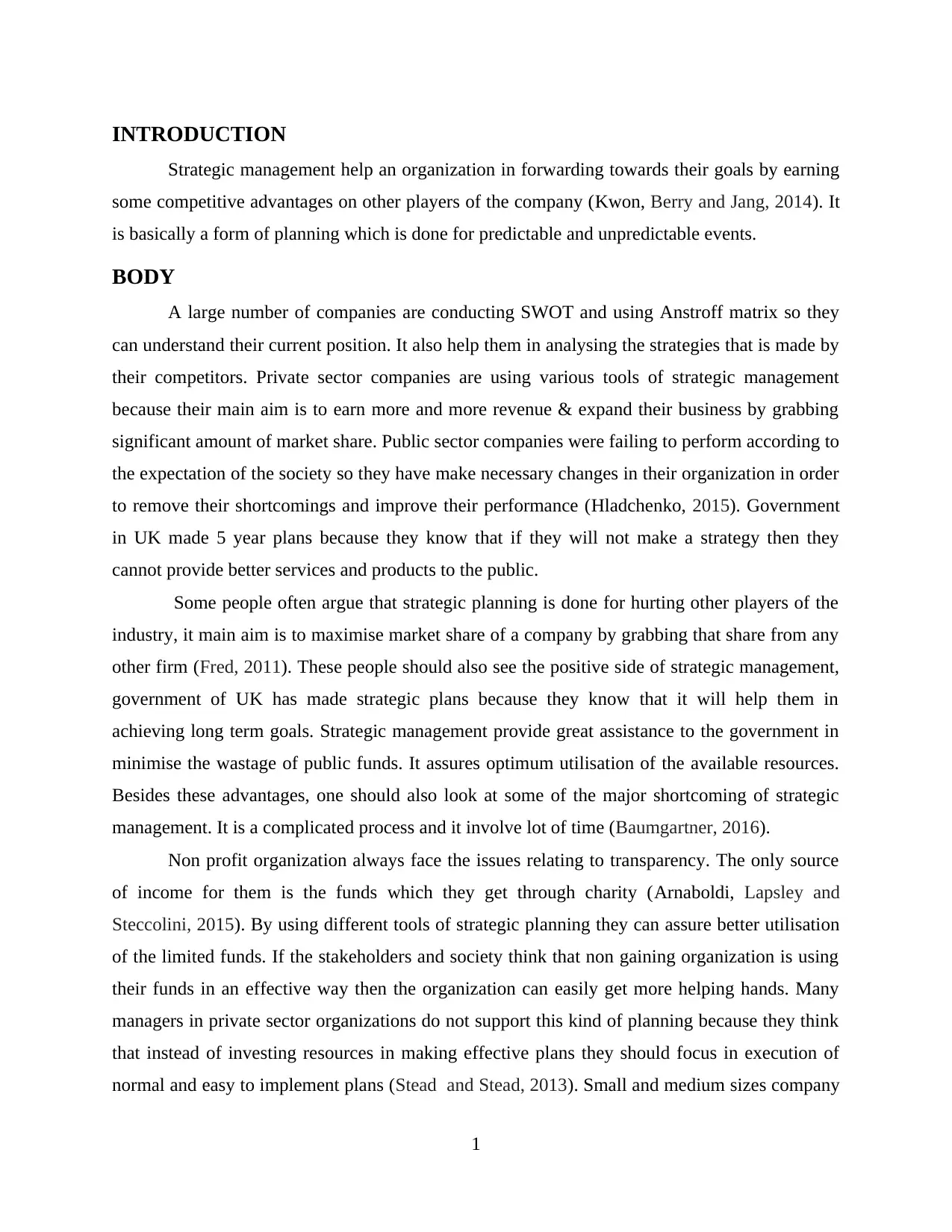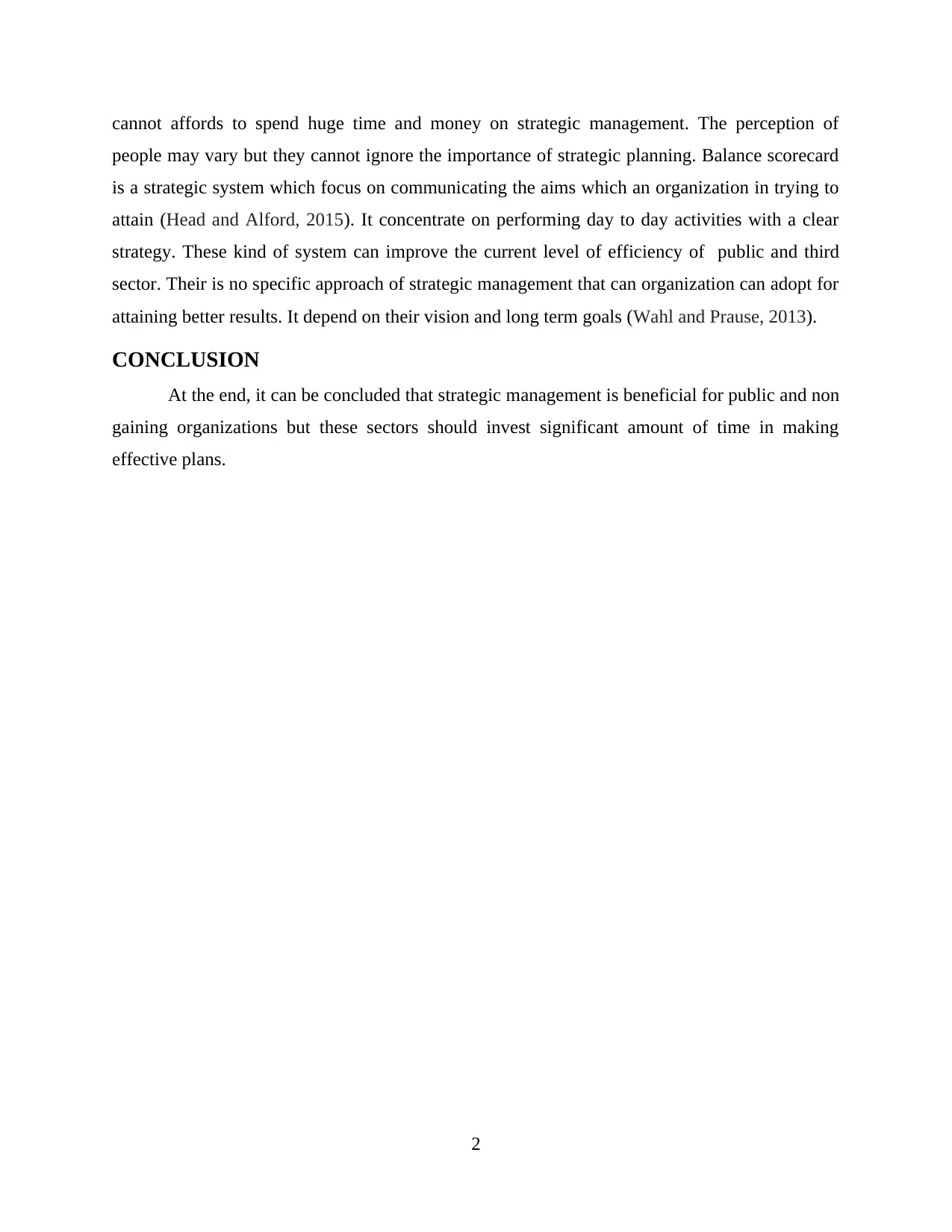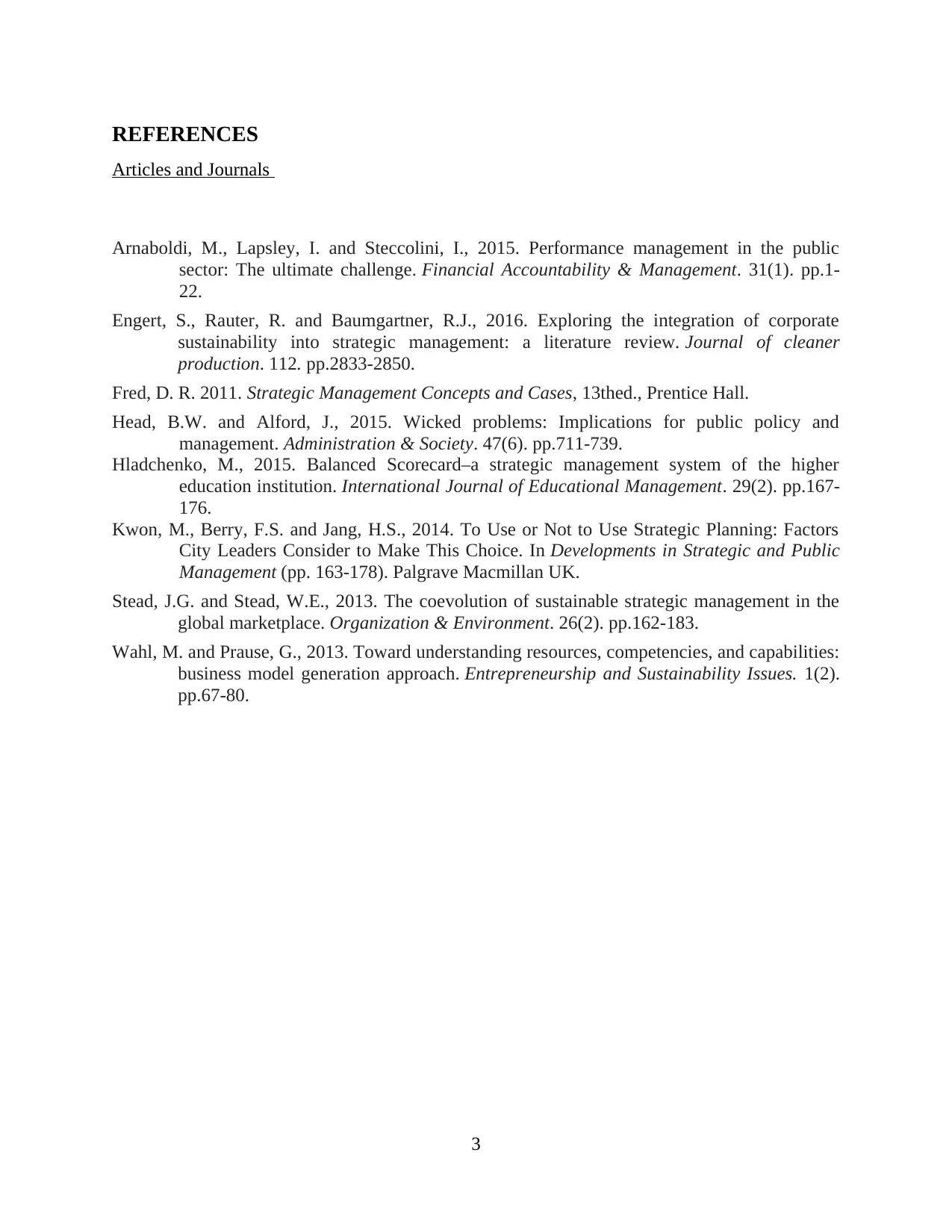Is Strategic Management Equally Relevant for Public and Third Sectors?
VerifiedAdded on 2020/06/04
|5
|912
|73
Essay
AI Summary
This essay explores the relevance of strategic management across public, third, and private sectors. It begins by defining strategic management and its importance in achieving organizational goals, including competitive advantages. The essay then delves into the application of tools like SWOT analysis and the Ansoff matrix in the private sector, highlighting their role in revenue generation and market share expansion. It contrasts this with the public sector, where strategic planning is vital for improving service delivery and addressing societal expectations, with examples like UK government initiatives. The discussion also addresses criticisms and challenges of strategic management, such as the time-consuming nature of the process and issues of transparency in non-profit organizations. The essay concludes that while strategic management is beneficial for public and non-profit organizations, it requires significant time and resources, advocating for the use of tools like the Balanced Scorecard to enhance efficiency and align day-to-day activities with broader strategic goals.
1 out of 5












![[object Object]](/_next/static/media/star-bottom.7253800d.svg)